Lot details By Kano Tessai (1845-1925), signed Tessai with kakihan Japan, Nara, early 20th century The bamboo stalk with a copper liner and finely carved in shishiaibori (sunken relief) to the exterior with a snail (katatsumuri), a firefly (hotaru), and a larger bug. Each of the animals is accompanied by a boldly incised inscription, the larger bug inscribed and signed Yuiga Dokuson an, TESSAI (‘Made by Tessai at the studio Yuiga Dokuson an’), with a kakihan. HEIGHT 30.2 cm Condition: Good condition with minor wear, few small nicks, age cracks with associated repairs. Provenance: Christie’s, Japanese and Korean Art, 18 September 2007, New York, lot 251. Ex-collection Shep Brozman, New York, acquired from the above. With a wood storage box (tomobako) inscribed and signed Yuiga Dokuson an, TESSAI (‘Made by Tessai at the studio Yuiga Dokuson an’), with a kakihan and seal. The kakihan on the brushpot and the tomobako is a monogram based on Ko (光) of Kotaro (光太郎). The poems on the present brushpot are kanshi, a Japanese term for Chinese poetry in general as well as the Japanese poetry written in Chinese by Japanese poets. It literally means ‘Han poetry’. Kanshi was the most popular form of poetry during the early Heian period in Japan among Japanese aristocrats and proliferated until the modern period. During the Edo period and the early Meiji period many bunjin or 'men of letters' schooled in the philosophy of Neo-Confucianism composed kanshi. Kanshi had multiple forms, but most notable were in 5 or 7 syllables in 4 or 8 lines. The Japanese poets of kanshi were skilled in the strict rhyming rules of lüshi and jueju, the two forms of the regulated verse that had gained most popularity during the Tang dynasty in China. The poem beside the snail can be translated as follows: ‘It is hard to measure how high it is, but I've managed to climb up on the dry wall with sticky endurance; my antennae do not seek fame and fortune but I am firmly grounded, even inside a small vase there are four seasons of the wind and the moon under the heaven.’ This poem is an almost direct quote of two well-known poems by the Chinese poets Su Shi (1037-1101) and Xu Youren (1287-1364). The poem beside the firefly can be translated as follows: ‘The last glow of life shines from within, bright in the gathering night.’ Kano Tessai (1845-1925) came from a Gifu family and started his life as a Buddhist priest, though his father instructed him in the art of carving. He studied Chinese literature and drawing and was a professor at Tokyo art school in 1872. He was also on the examining committee for investigating the ancient art of Japan and subsequently went to Nara where he engaged in the reproductions of old objects of art, such as the present example. Auction comparison: Compare a related bamboo archaistic ding censer by Kano Tessai, dated 1914, at Galerie Zacke, 6 March 2021, Vienna, lot 566 (sold for 12,640 EUR).
Lot details By Kano Tessai (1845-1925), signed Tessai with kakihan Japan, Nara, early 20th century The bamboo stalk with a copper liner and finely carved in shishiaibori (sunken relief) to the exterior with a snail (katatsumuri), a firefly (hotaru), and a larger bug. Each of the animals is accompanied by a boldly incised inscription, the larger bug inscribed and signed Yuiga Dokuson an, TESSAI (‘Made by Tessai at the studio Yuiga Dokuson an’), with a kakihan. HEIGHT 30.2 cm Condition: Good condition with minor wear, few small nicks, age cracks with associated repairs. Provenance: Christie’s, Japanese and Korean Art, 18 September 2007, New York, lot 251. Ex-collection Shep Brozman, New York, acquired from the above. With a wood storage box (tomobako) inscribed and signed Yuiga Dokuson an, TESSAI (‘Made by Tessai at the studio Yuiga Dokuson an’), with a kakihan and seal. The kakihan on the brushpot and the tomobako is a monogram based on Ko (光) of Kotaro (光太郎). The poems on the present brushpot are kanshi, a Japanese term for Chinese poetry in general as well as the Japanese poetry written in Chinese by Japanese poets. It literally means ‘Han poetry’. Kanshi was the most popular form of poetry during the early Heian period in Japan among Japanese aristocrats and proliferated until the modern period. During the Edo period and the early Meiji period many bunjin or 'men of letters' schooled in the philosophy of Neo-Confucianism composed kanshi. Kanshi had multiple forms, but most notable were in 5 or 7 syllables in 4 or 8 lines. The Japanese poets of kanshi were skilled in the strict rhyming rules of lüshi and jueju, the two forms of the regulated verse that had gained most popularity during the Tang dynasty in China. The poem beside the snail can be translated as follows: ‘It is hard to measure how high it is, but I've managed to climb up on the dry wall with sticky endurance; my antennae do not seek fame and fortune but I am firmly grounded, even inside a small vase there are four seasons of the wind and the moon under the heaven.’ This poem is an almost direct quote of two well-known poems by the Chinese poets Su Shi (1037-1101) and Xu Youren (1287-1364). The poem beside the firefly can be translated as follows: ‘The last glow of life shines from within, bright in the gathering night.’ Kano Tessai (1845-1925) came from a Gifu family and started his life as a Buddhist priest, though his father instructed him in the art of carving. He studied Chinese literature and drawing and was a professor at Tokyo art school in 1872. He was also on the examining committee for investigating the ancient art of Japan and subsequently went to Nara where he engaged in the reproductions of old objects of art, such as the present example. Auction comparison: Compare a related bamboo archaistic ding censer by Kano Tessai, dated 1914, at Galerie Zacke, 6 March 2021, Vienna, lot 566 (sold for 12,640 EUR).
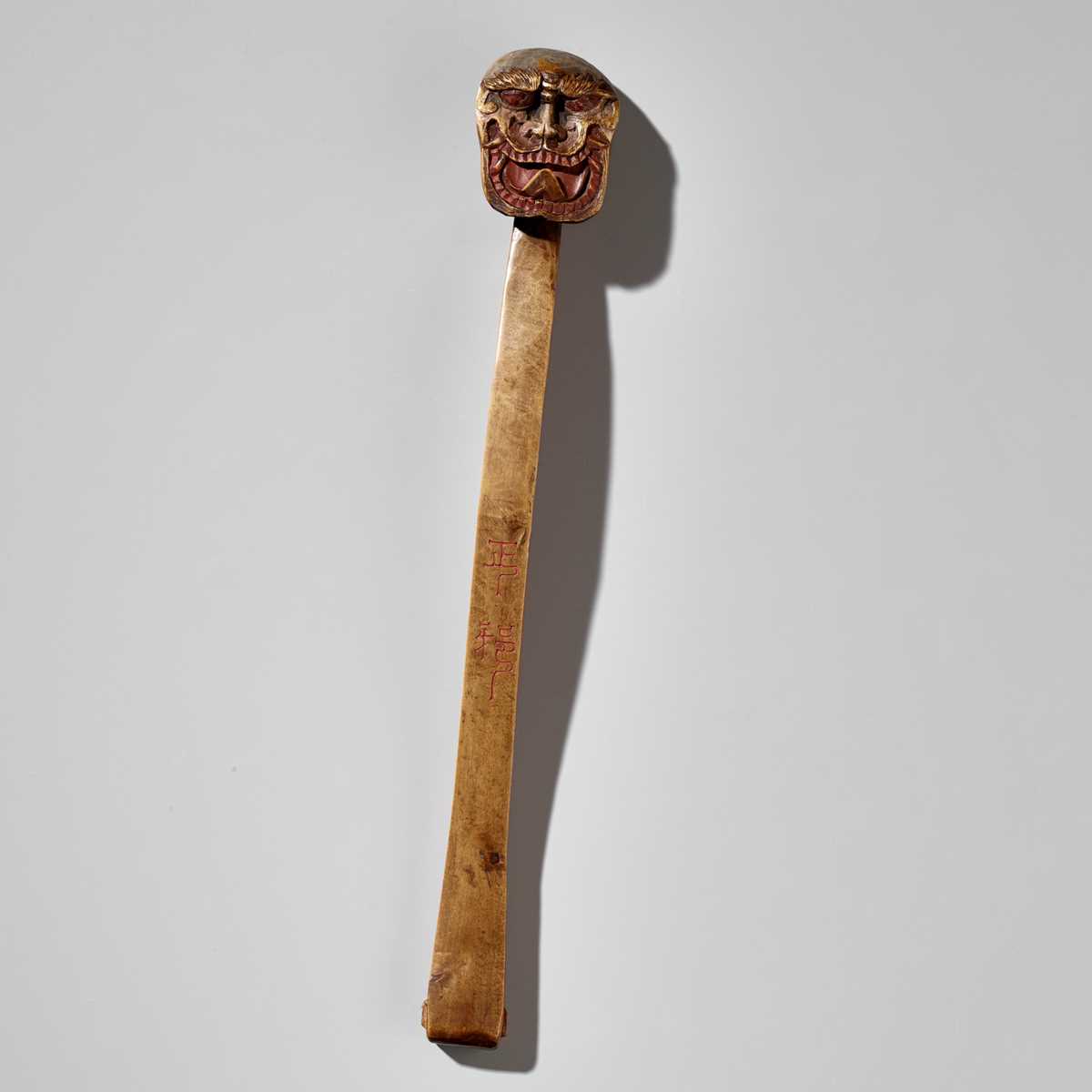
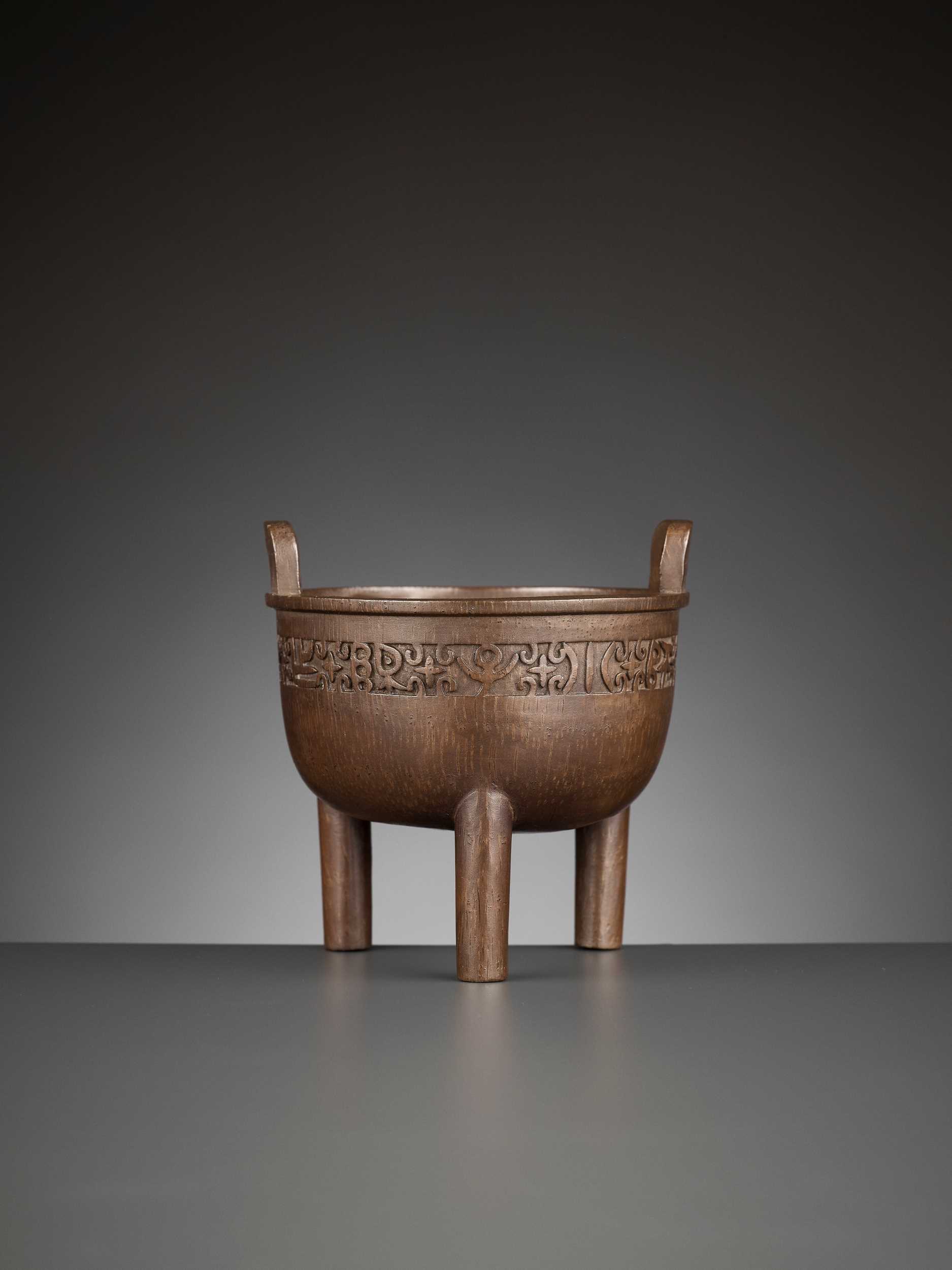

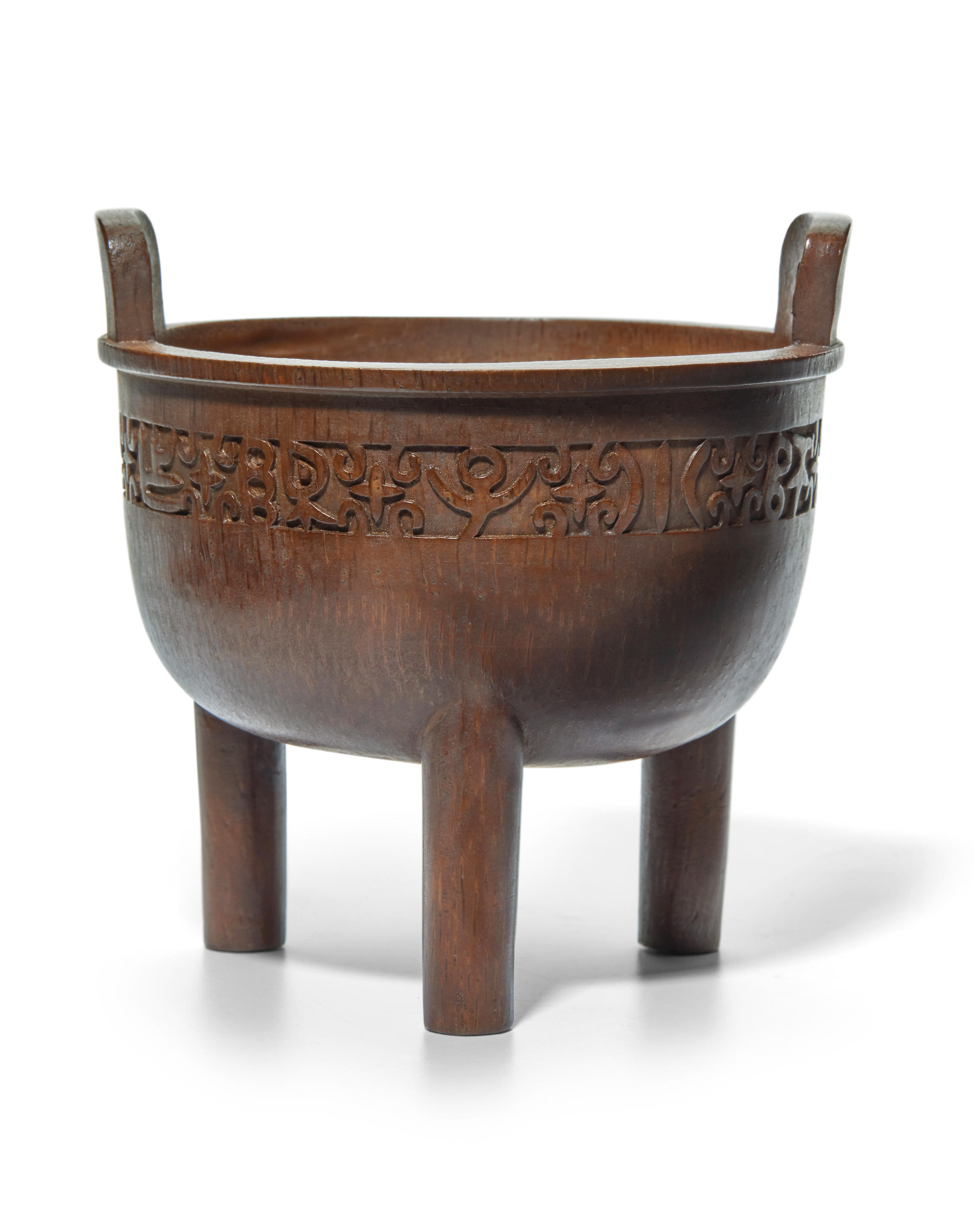
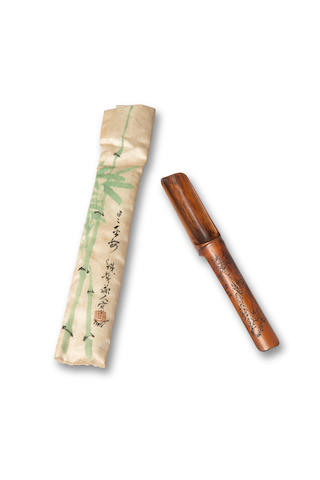
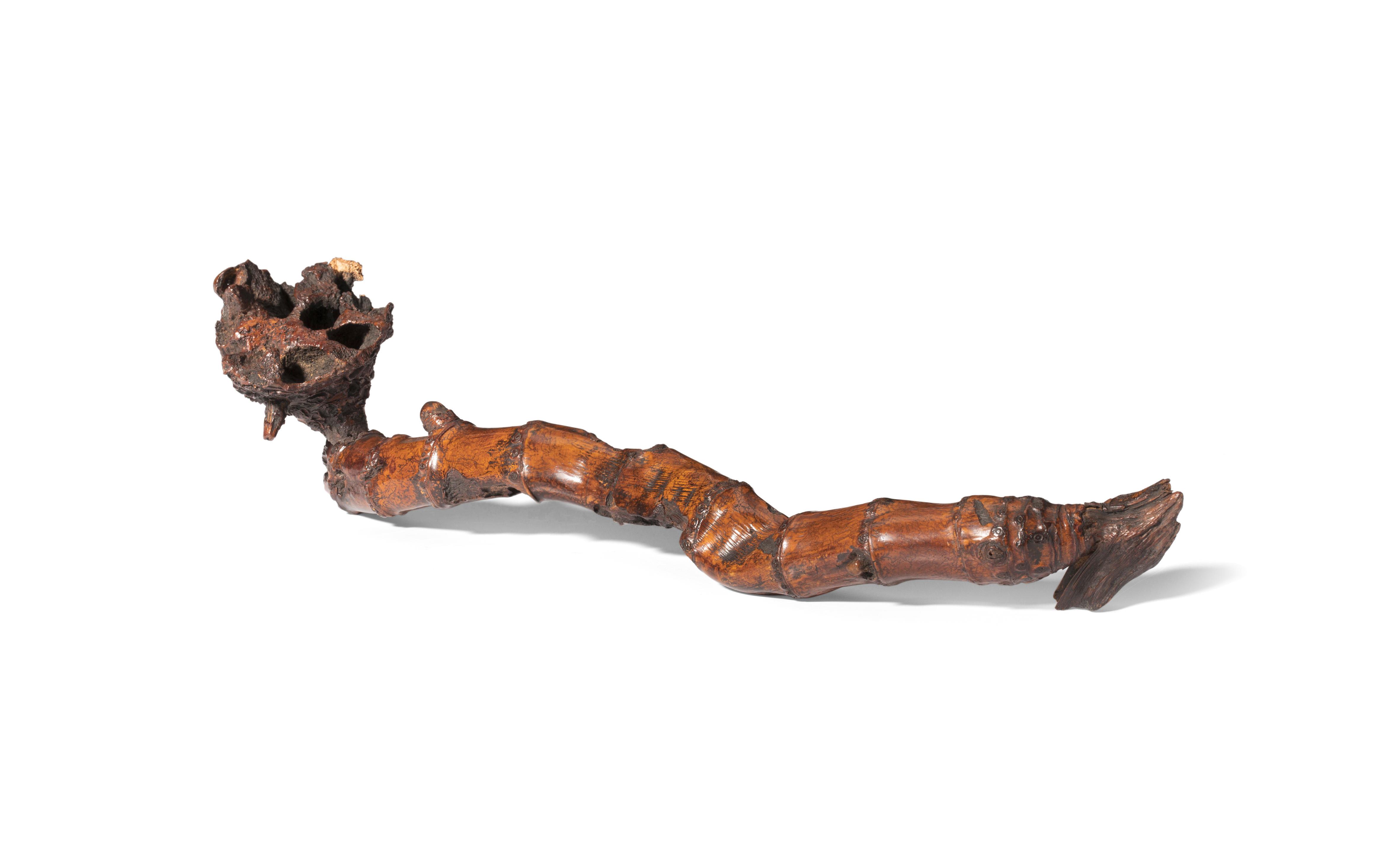


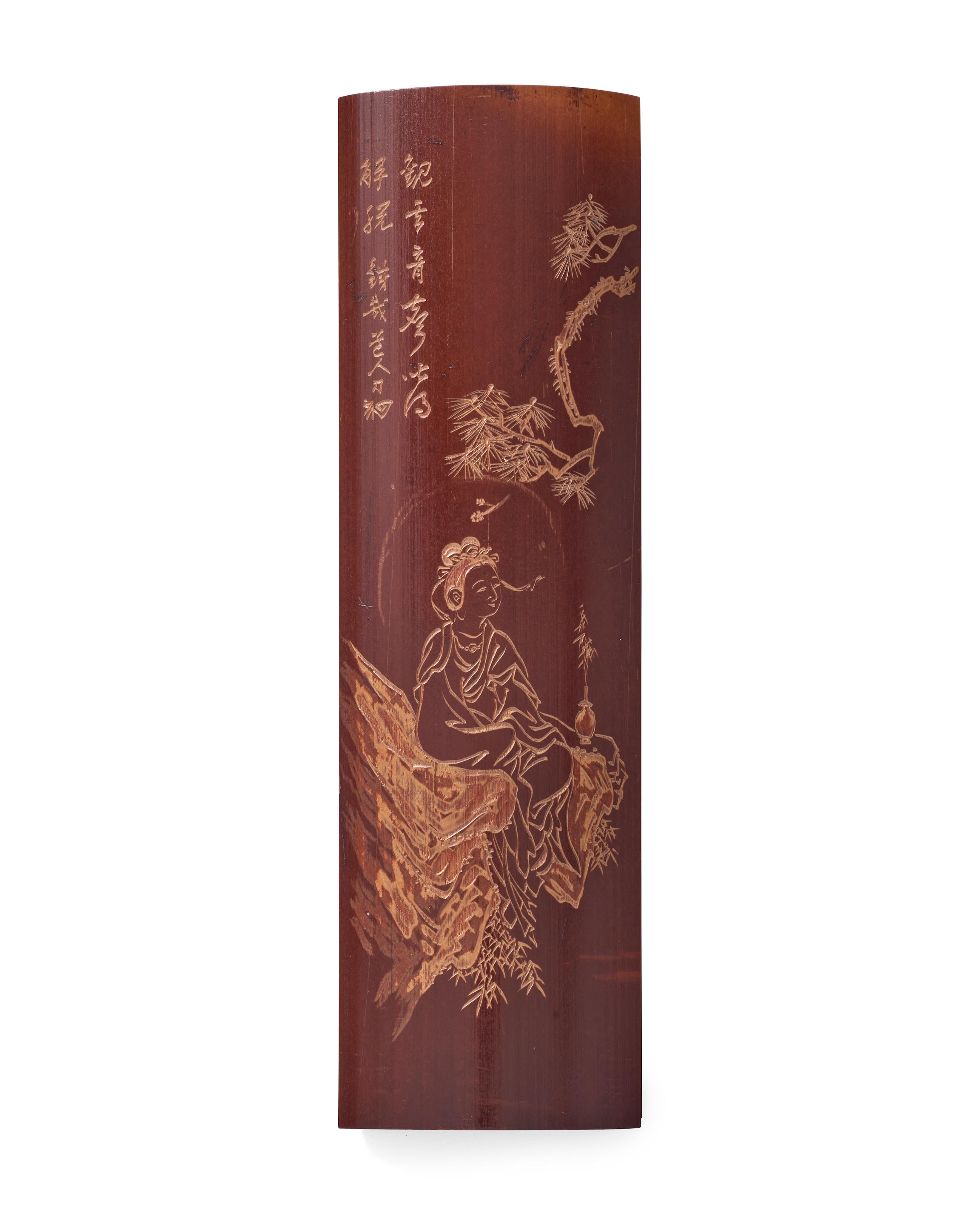
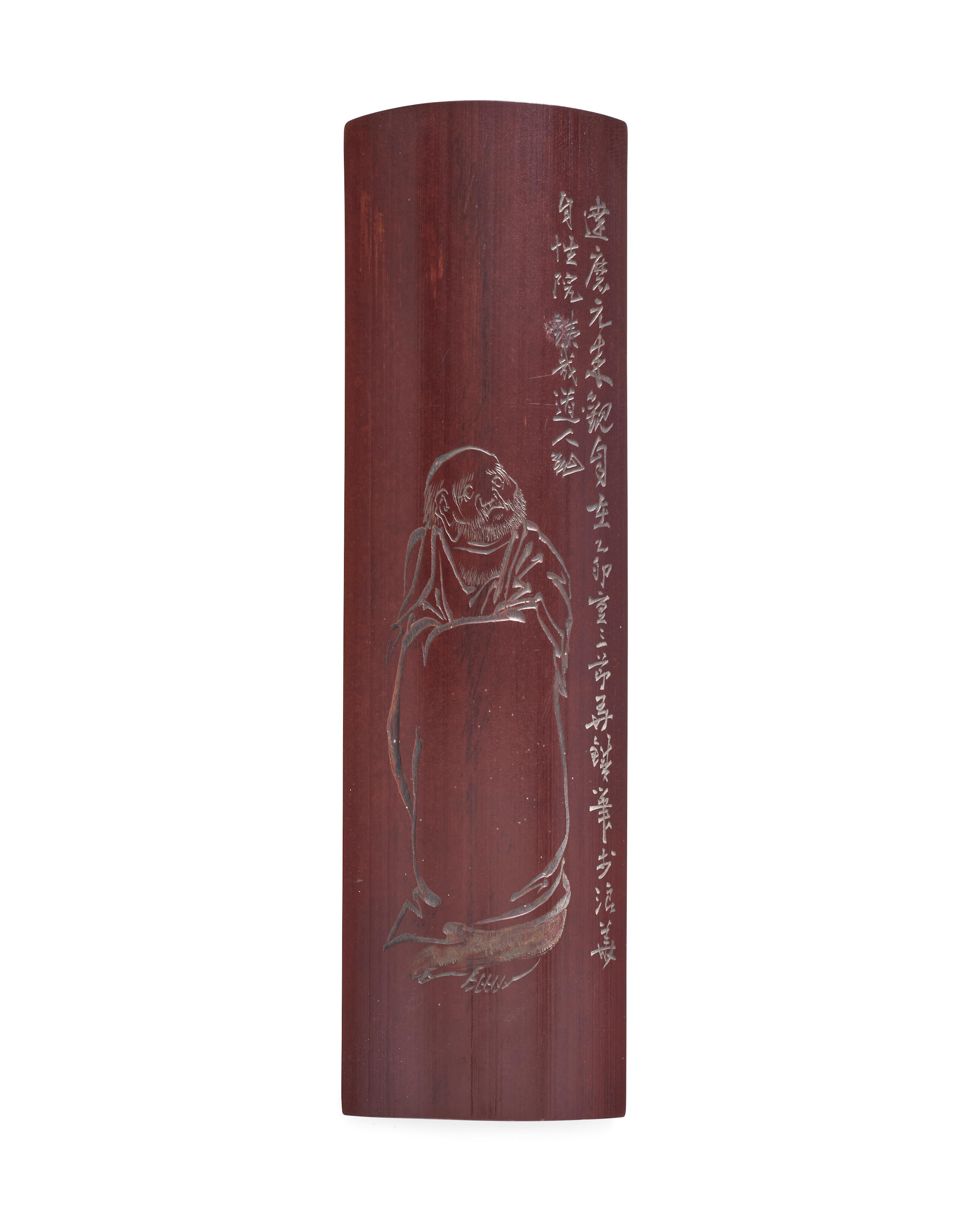
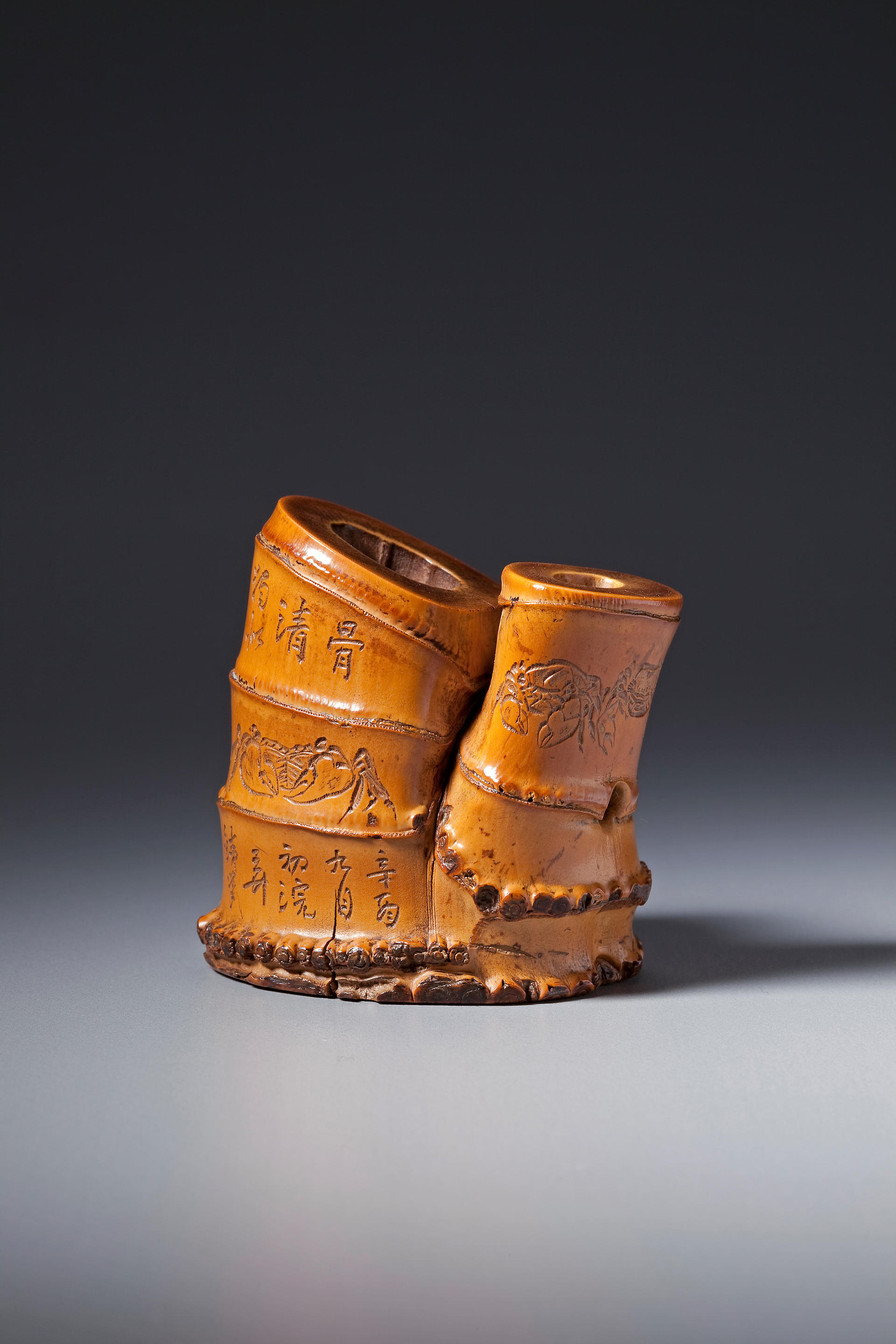
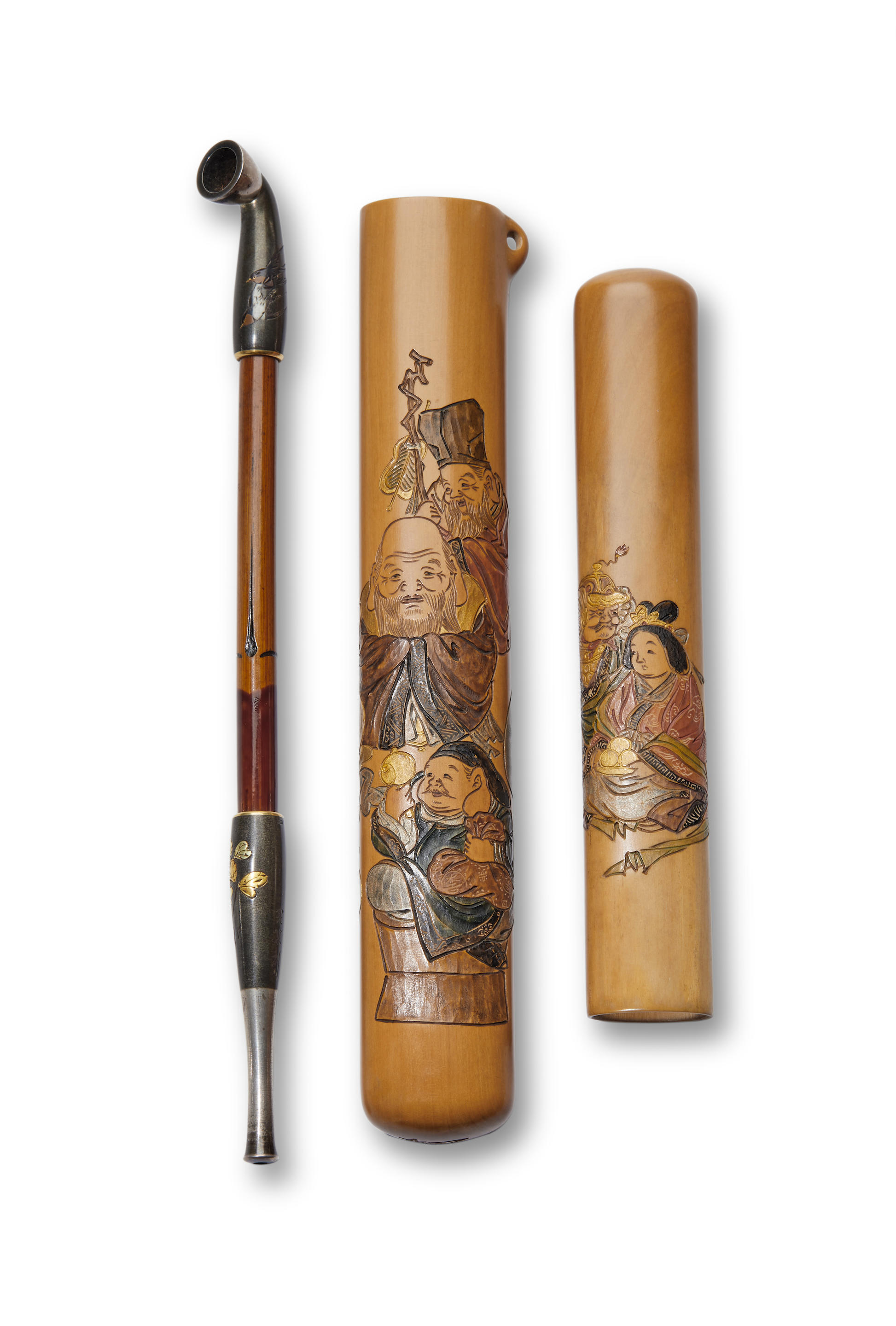
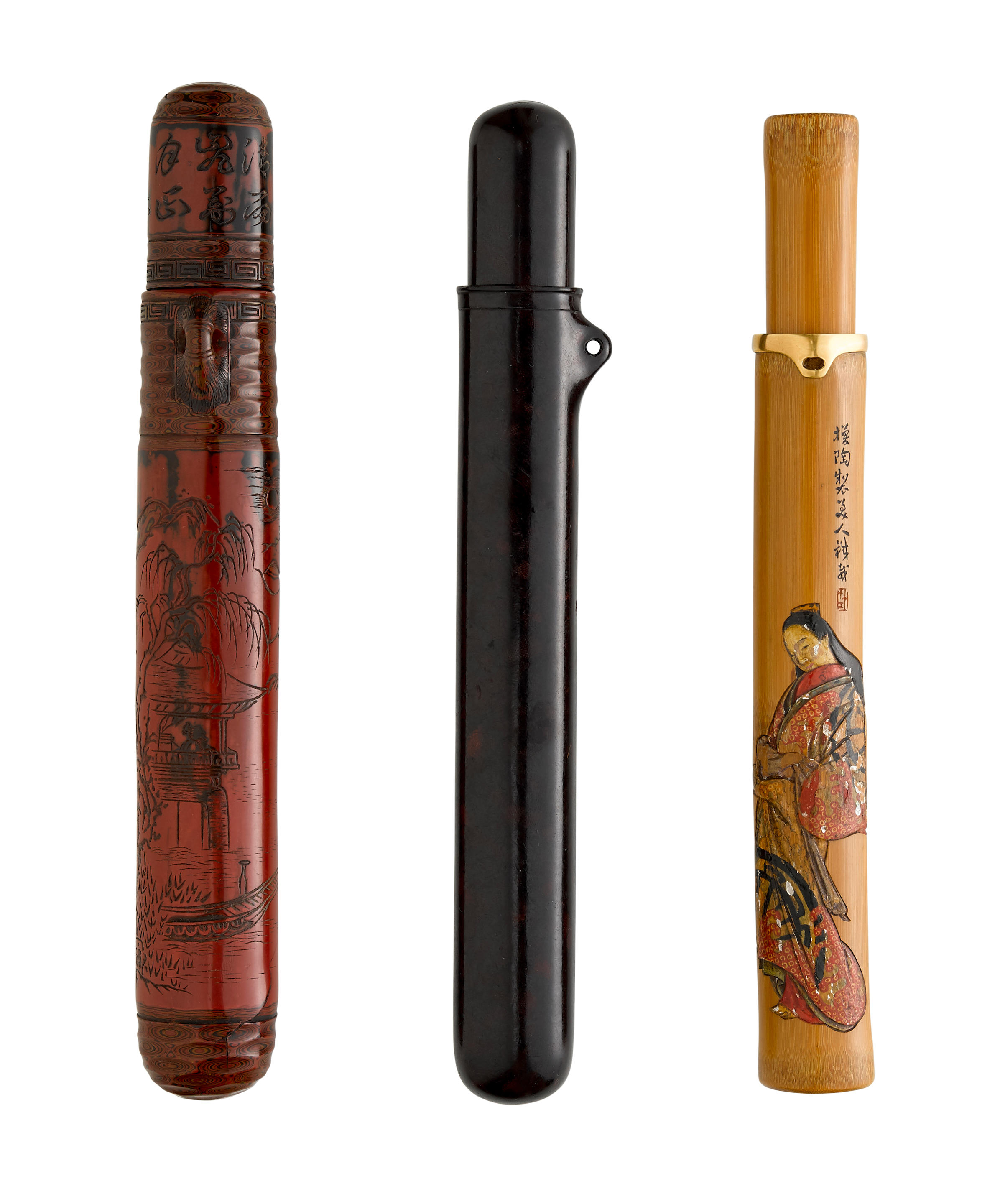

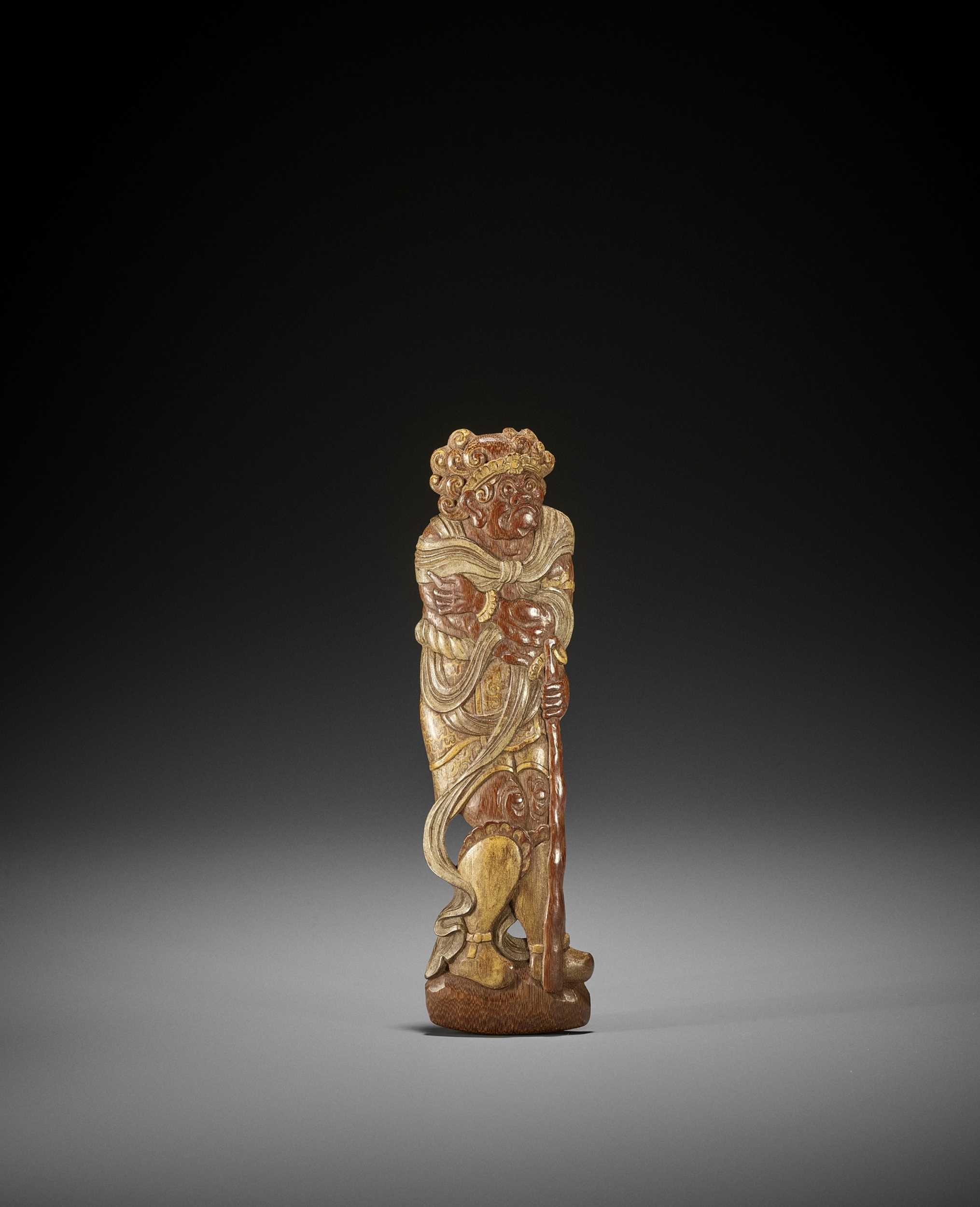
Testen Sie LotSearch und seine Premium-Features 7 Tage - ohne Kosten!
Lassen Sie sich automatisch über neue Objekte in kommenden Auktionen benachrichtigen.
Suchauftrag anlegen